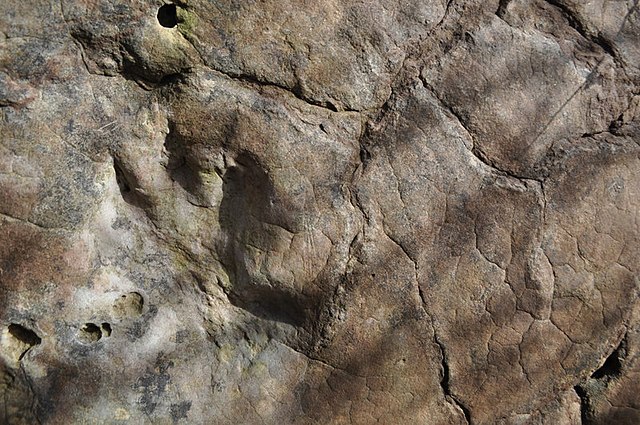Avemetatarsalia is a clade of diapsid reptiles containing all archosaurs more closely related to birds than to crocodilians. The two most successful groups of avemetatarsalians were the dinosaurs and pterosaurs. Dinosaurs were the largest terrestrial animals for much of the Mesozoic Era, and one group of small feathered dinosaurs has survived up to the present day. Pterosaurs were the first flying vertebrates and persisted through the Mesozoic before dying out at the Cretaceous-Paleogene (K-Pg) extinction event. Both dinosaurs and pterosaurs appeared in the Triassic Period, shortly after avemetatarsalians as a whole. The name Avemetatarsalia was first established by British palaeontologist Michael Benton in 1999. An alternate name is Pan-Aves, or "all birds", in reference to its definition containing all animals, living or extinct, which are more closely related to birds than to crocodilians.
Avemetatarsalia
Archosauria is a clade of diapsid sauropsid tetrapods, with birds and crocodilians being the only living representatives. Archosaurs are broadly classified as reptiles, in the cladistic sense of the term, which includes birds. Extinct archosaurs include non-avian dinosaurs, pterosaurs and extinct relatives of crocodilians. Modern paleontologists define Archosauria as a crown group that includes the most recent common ancestor of living birds and crocodilians, and all of its descendants. The base of Archosauria splits into two clades: Pseudosuchia, which includes crocodilians and their extinct relatives; and Avemetatarsalia, which includes birds and their extinct relatives.
Archosaur
Examples of pseudosuchians. Clockwise from top-left: Longosuchus meadei (an aetosaur), Gavialis gangeticus (a crocodilian), Saurosuchus galilei (a loricatan), Pedeticosaurus leviseuri (a sphenosuchian), Chenanisuchus lateroculi (a dyrosaurid), and Dakosaurus maximus (a thalattosuchian).
Examples of avemetatarsalians. Clockwise from top-left: Tupuxuara leonardi (a pterosaur), Alamosaurus sanjuanensis, (a sauropod), Tsintaosaurus spinorhinus (an ornithopod), Daspletosaurus torosus (a tyrannosaurid), Pentaceratops sternbergii (a ceratopsian), and Grus grus (a neornithian).
Chirotherium footprint in Triassic sediments





